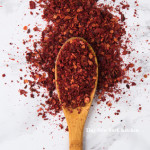How to cook rich, perfectly roasted winter squash without any prep work. This method works for winter squash of any size, so adjust the roasting time as needed.
Preheat oven to 400 degrees.
Roast the whole squash on a baking sheet until the skin is papery and a fork inserted into two or three different spots reveals very tender flesh (45 minutes per pound).
Remove from oven and set aside until cool.
Breakfast. Lunch. Dinner. Have squash for them all!
Start by cooking a whole winter squash.
Breakfast
Add cooked cubes of butternut squash, grated Gruyere cheese and chopped sage to a frittata mixture.
Lunch
Meal-prep lunches by layering cooked spaghetti squash, marinara sauce and meatballs or shredded chicken.
Dinner
Add thick slices of cooked acorn squash (you can keep the skin on) to soup or stew during the last few minutes of cooking.
“Work With What You Got!”
©Tiny New York Kitchen © 2018 All Rights Reserved
Fresh herbs have delighted the senses and tantalized the taste buds for centuries. In medieval times great bundles of herbs were strewn on castle floors as a natural air purifier. Brides often chose to wear delicate crowns of flowers interwoven with herbs upon their heads, and both Western and Eastern medical practitioners may employ herbal remedies for their patients.
Many cooks are quite passionate about utilizing herbs in their favorite recipes. Especially bountiful herbs, which perfume our summer and fall gardens with beautiful scents and enhance the plate with their wonderful array of flavors. Using fresh herbs allows cooks to cut back on unnecessary salt, fat, and sugars, while naturally elevating main ingredients.
Brimming with health benefits, each herb plays a special role in beautifying and fortifying the body. Rosemary, for example, may improve memory. Parsley is packed with apigenin, which could potentially reduce the chances of cancerous growths and tumors. Oregano, like all other herbs, has anti-inflammatory properties that may reduce joint inflammation. Oregano is also particularly anti-bacterial and anti-fungal, and can contribute to flawless skin and glossy hair. The calcium content in basil and parsley can help maintain healthy teeth. Mint is calming and soothing and can be a digestive aid. The heady aroma of fresh herbs may help relieve any effects of nausea, as well as soothing and reviving the senses.
Basil’s affinity with tomatoes is a most engaging taste combination. Serve sun warmed tomatoes sprinkled with shards of fresh basil leaves and drizzled with olive oil. The slightly sharp bite of chives enlivens potatoes, eggs and salad dressings. Cilantro is a must for Mexican and Asian dishes. Dill adds a light, lovely layer to fish, while the snappy tang of parsley is delightful in tabouli, potato salad, and pasta. Mint is essential for tall glasses of cold ices tea or lemonade and also for embellishing summer fruit platters. Transport your taste buds by making a salad with a bounty of vegetables and a large handful of freshly minced oregano, basil, parsley, and dill. Or scent your grill with the woody stalks of rosemary. They make great skewers, infusing meat, fish, and vegetables with bright, strong flavors.
Clean herbs by soaking in a bowl of cool water, changing the water several times, or until you no longer see any dirt in the bottom of the bowl. Spin dry in a salad spinner or on layers of paper towels. For hot dishes, add herbs at the end of cooking time to avoid diluting their essence.
“An herb is the friend of physicians and the praise of cooks.” – Charlemagne
www.tinynewyorkkitchen.com
“Work With What You Got!”
©Tiny New York Kitchen © 2018 All Rights Reserved
The best way to be a good cook is not to worry about being a perfect cook. Give up on perfection, or at least any ideas you may have that perfection is a fixed thing against which you must measure everything you do. Nothing we cook will look will look exactly the same as a picture in a magazine or taste the way our friend’s dish did. Even a familiar recipe will not offer the same result from one day to the next time we make it.
We at Tiny New York Kitchen like to experiment with flavors. Often we reach into our well-stocked pantry and use the essential flavor builders to take a dish to the next level.
Essential Flavor Builders To Keep On Hand:
Vinegars: Vinegar’s complex tang is the secret ingredient in many recipes. We shake a bit of sherry vinegar into bean soup, and add rice vinegar to coleslaw dressings. If you had to choose just one vinegar, we would recommend the mild rice vinegar, but we also keep balsamic, sherry, malt, and cider vinegars on hand.
Anchovies: A filet of anchovy blended into a marinade or dressing adds savory flavor without being too overtly fishy.
Chili Paste: We keep chili paste or bottled Sriracha for drizzling over rice and adding to meat marinades.
Red Pepper Flakes: Many dishes get better with a little kick from red pepper flakes.
Soy Sauce: Soy sauce is a way to add umami flavor and a little salt to dressing and soups.
“Work With What You Got!”
©Tiny New York Kitchen © 2018 All Rights Reserved
Place room temperature eggs in a single layer in a saucepan and add enough cold water to cover by 1 inch. Add 1 tablespoon vinegar and 1/2 teaspoon salt to the water to help prevent the shells from cracking and the whites from running should the shells crack. Bring the water to a boil over a high heat. Once the water boils, turn off the heat, cover the pot, and let it stand for 10 minutes. Remove the eggs with a slotted spoon and gently place them in an ice bath.
Peel and use hard-boiled eggs or store the unpeeled eggs in a covered container in the refrigerator for up to 5 days.
“Work With What You Got!”
©Tiny New York Kitchen © 2018 All Rights Reserved
Sometimes, the best way to cook fresh produce is the simplest way of all.
For roasting vegetables, put them on a baking sheet, sprinkle with olive oil and a bit of kosher salt, and cook in a hot oven until tender, turn once or twice.
For steaming vegetables, put a small amount of water in a saucepan and heat over a medium-high heat until tender, as little as 2 minutes or up to 10, depending on the vegetable.
“Work With What You Got!”
©Tiny New York Kitchen © 2018 All Rights Reserved
Grilling season is upon us and many want to grill fish, but have questions on the best way to do it. Here are some easy tips to help you get the most out of your fish grilling experience.
Ask Your Fishmonger. Fishmongers are knowledgeable and can recommend the best fish for dinner. They will clean your fish for you as well.
Take It Easy. Leave the fish head and tail on for easier handling, and try grilling a small 1 to 1 1/2 pound fish if you’re a first-timer.
Work With A Clean Grill. Scrub the grates clean with a wire brush to reduce sticking, and rub the exterior of the fish with oil before placing it on the grill.
Get Cooking And Don’t Be A Flipper. Grill over a medium-high heat for about 8 minutes total cooking time per inch of thickness. Most fish will cook best if turned only once, so wait at least 3 minutes for the fish to form a crust on the outside before flipping. Don’t risk the fish falling apart by trying to flip multiple times.
“Work With What You Got!”
©Tiny New York Kitchen © 2018 All Rights Reserved
Chefs love cast iron’s durability and its ability to evenly retain heat. What’s old is new again. Cast iron comes in all sizes from pans that hold a single fried egg to 20-inch giants that weigh 25 pounds and take up two burners. You can pick up a cast iron pan for $25 to $300. I like 10-inch skillets for everyday cooking, which are between four to six pounds and can comfortably accommodate a pack of chicken thighs. Remember that a bigger pan is a heavier pan, which limits how easily you can maneuver it as you cook.
Make sure to season your cast iron pan. Use a paper towel to rub your pan all over with a very light coat of neutral oil like grapeseed or vegetable oil and then place in a 500-degree oven for an hour. You want your pan to have a matte dark finish. Remove from the oven and let cool. Rub another very light coat of oil all over before storing. The very best thing that you can do to maintain that new seasoning is to get cooking. Each time you cook a steak or chicken thighs, the fat adds another coat to the pan’s surface, which will create a glassy finish over time. Re-season when your pan starts to look dry and dull or if you can’t remember the last time you cooked in it. Always rub you pan down with a thin coat of neutral oil before storing.
Just because you can cook it in cast iron doesn’t mean that you should! There are some foods that you definitely should not cook in your cast iron. Fish is not something that I would cook in cast iron unless I want to infuse next day’s pancakes with the essence of fish. Tomato sauce’s high acidity reacts with cast iron, which creates an unpleasant metallic flavor. I’d skip cooking scrambled eggs in cast iron unless I want to be on dish duty for an hour or two after breakfast.
Wash your pan! Yes, you do need to wash your pan. Each time you cook with cast iron a few burnt and crusty food bits inevitably seem to stick to the pan. If you don’t scrub it clean between uses, those bits will fossilize under subsequent layers of seasoning, which create an irregular surface that will never become truly nonstick (the opposite of what you want). Wash your pan with hot water and a drop of dish soap while it’s still warm. Take care not to let the pan soak in water. Wipe down the pan and then set it over a low flame for a few minutes to fully dry. Rub all over with a very light coat of neutral oil before storing (just like you would after seasoning it). These steps are crucial for keeping your pan in fighting form against Public Enemy Number One – RUST! If you ever do have spot rust just use and old toothbrush dipped in distilled vinegar to scrub it off, let it dry, and then rub in a drop of oil. If you make a regular habit of cleaning your cast iron you’ll have a faithful companion for life.
“Work With What You Got!”
©Tiny New York Kitchen © 2018 All Rights Reserved
A little more protein and a little less sugar really do add up to living a healthier lifestyle. Here are nine easy hacks to keep you on track.
Skip the butter and sour cream. Salsa is your baked potato’s new best friend.
Peanut butter powder will flavor smoothies without the fat.
Move over mayonnaise. Greek yogurt can take its place in salads and on sandwiches.
Waffle and pancake upgrade: Use warm applesauce or sautéed fruit instead of syrup.
Add a slice of tomato, pepper strips, or shredded spinach to grilled cheese sandwiches.
Add cannellini or butter beans to smoothies for a thick, creamy texture and add protein and fiber.
Use bone broth instead of regular chicken broth for added protein.
Fill your plate with vegetables swap-outs like cauliflower rice or zucchini noodles.
Instead of steaming or boiling, try roasting vegetables. The caramelized flavor is hearty and satisfying.
“Work With What You Got!”
©Tiny New York Kitchen © 2018 All Rights Reserved
Crystallized ginger is fresh ginger that has been slowly cooked in sugar water and rolled in coarse sugar for preservation. It has a sweet, spicy taste and can easily be made at home.
“Work With What You Got!”
© Victoria Hart Glavin Tiny New York Kitchen © 2017 All Rights Reserved
Dark Leafy Greens Give You More Nutritional Bang For Your Buck. Add More Greens To Your Diet And Most Likely You’ll Feel Much Better.
Add Cooked Greens To Frittatas, Breakfast Tacos And Poached Eggs.
Stir Greens Into Soups And Stews During The Last Few Minutes Of Cooking.
Start Your Day With A Smoothie Packed With Kale.
Add Greens To Grain dishes Or Serve Grains Over A Bed Of Steamed Chard.
Add Sautéed Greens To Cooked Whole Wheat Pasta Or Stir Into Pasta Sauces.
Make Sure To Wash Dark Leafy Greens In A Sink Full Of Water To Remove Dirt And Sand. Dry Well.
Store Your Greens In A Bag Along With A Paper Towel In The Crisping Drawer Of Your Refrigerator, Or Quickly Blanch And Freeze Greens To Use For Quick Sides And Easy Meal Prep Later.
“Work With What You Got!”
© Victoria Hart Glavin Tiny New York Kitchen © 2017 All Rights Reserved















